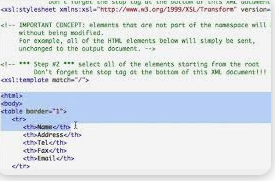Forex trading, also known as foreign exchange trading, involves the buying and selling of currencies on the global financial market. This dynamic market offers significant opportunities for profit as it operates 24 hours a day, five days a week, with participants ranging from large financial institutions to individual retail traders. Understanding the basics of forex trading is crucial for anyone looking to enter this exciting field. This guide will walk you through the fundamental concepts and strategies to help you get started on your forex trading journey.
What is Forex Trading?
Forex trading, or currency trading, involves the exchange of one currency for another in the foreign exchange market. This market is the largest and most liquid financial market in the world, with an estimated daily trading volume exceeding $6 trillion. Unlike traditional stock markets, the forex market operates 24 hours a day during the weekdays, providing continuous opportunities for traders.
The essence of forex trading is to capitalize on the fluctuating values of currency pairs. Each currency pair consists of a base currency and a quote currency. For example, in the EUR/USD pair, the euro is the base currency, and the US dollar is the quote currency. Traders speculate on the value of the base currency relative to the quote currency, aiming to buy low and sell high, or vice versa.
Understanding the basics of forex trading involves familiarizing yourself with key concepts such as how the forex market works, the major participants, and the factors influencing currency values. This foundational knowledge is essential for developing effective trading strategies and making informed trading decisions.
How Does the Forex Market Work?
The forex market operates as a decentralized global marketplace where currencies are traded over-the-counter (OTC). Unlike stock markets, there is no central exchange or physical location for forex trading. Instead, transactions occur electronically via computer networks among traders worldwide. The forex market is open 24 hours a day, five days a week, reflecting the different time zones of major financial centers such as London, New York, Tokyo, and Sydney.
Forex trading involves the simultaneous buying of one currency and selling of another. These transactions are facilitated by forex brokers who provide trading platforms for retail traders and large financial institutions alike. The value of currencies fluctuates based on various factors, including economic indicators, geopolitical events, and market sentiment. Traders aim to profit from these fluctuations by speculating on the future direction of currency pairs.
The forex market is unique due to its high liquidity and continuous operation. This means that traders can enter and exit positions at any time during the trading week, providing flexibility and numerous trading opportunities. The decentralized nature of the market also means that prices can vary slightly between different brokers and platforms, known as “market fragmentation”.
Who are the Major Players in Forex Trading?
Several key players participate in the forex market, each with different roles and objectives. The major players include central banks, commercial banks, hedge funds, multinational corporations, and retail traders. banks play a crucial role in the forex market as they implement monetary policies and control interest rates, which can significantly impact currency values. For instance, decisions by the Federal Reserve or the European Central Bank can lead to substantial movements in the USD or EUR, respectively. Commercial banks conduct the majority of forex transactions, providing liquidity and facilitating trades on behalf of their clients, including large corporations and institutional investors.
Hedge funds and investment firms engage in forex trading to hedge against currency risk and to speculate for profit. These entities often have access to advanced trading technologies and significant capital, allowing them to influence market trends. Retail traders, although smaller in terms of trade volume, have become increasingly significant due to the rise of online trading platforms. These individual traders seek to profit from currency fluctuations by using various trading strategies and tools.
How to Start Forex Trading?
Starting forex trading involves several key steps to ensure a successful and informed entry into the market. The first step is to choose a reliable forex broker. It is essential to research and compare brokers based on factors such as regulatory compliance, trading platform features, fees, margin rates, and customer support. Selecting a broker that meets your needs and provides a secure trading environment is crucial for your trading success.
Once you have chosen a broker, the next step is to open a forex trading account. This process typically requires providing personal information, financial details, and identification documents to comply with regulatory requirements. Most brokers offer different types of accounts, including demo accounts, which allow you to practice trading without risking real money. This can be an excellent way to familiarize yourself with the trading platform and develop your trading strategies.
After setting up your account, it is important to fund it to start trading. Many brokers allow funding through various methods, including bank transfers, credit/debit cards, and online payment services. It is advisable to start with a small amount of capital and gradually increase it as you gain experience and confidence in your trading abilities. Additionally, educating yourself on market analysis techniques, risk management strategies, and trading psychology is vital to becoming a successful forex trader.
What are Currency Pairs in Forex Trading?
In forex trading, a currency pair is a quotation of two different currencies, with the value of one currency being quoted against the other. The first currency in the pair is the base currency, and the second currency is the quote currency. For example, in the EUR/USD pair, the euro (EUR) is the base currency, and the U.S. dollar (USD) is the quote currency.
Currency pairs are categorized into three main types: major pairs, minor pairs, and exotic pairs. Major pairs involve the most traded currencies in the world, typically including the U.S. dollar as one half of the pair, such as EUR/USD, USD/JPY, and GBP/USD. These pairs are known for their high liquidity and tight spreads, making them popular among traders.
Minor pairs, also known as cross-currency pairs, do not include the U.S. dollar. Examples include EUR/GBP and AUD/JPY. These pairs have lower liquidity compared to major pairs, which can result in wider spreads and less frequent trading opportunities.
Exotic pairs involve one major currency and one currency from a smaller or emerging economy, such as USD/TRY or EUR/IDR. These pairs are less liquid and more volatile, posing higher risks and potential rewards for traders.
How to Choose a Forex Broker?
Selecting the right forex broker is a crucial step in starting your trading journey. The first factor to consider is regulatory compliance. Ensure the broker is regulated by a reputable authority, such as the Financial Conduct Authority (FCA) in the UK or the Commodity Futures Trading Commission (CFTC) in the U.S. This provides a level of security and trust that the broker operates within the legal framework.
Next, evaluate the broker’s trading platform. The platform should be user-friendly, stable, and offer the necessary tools for technical and fundamental analysis. Features like real-time charts, news feeds, and the ability to execute trades quickly are essential. Additionally, consider the broker’s fees and spreads, as these costs can impact your profitability. Compare the spreads on major currency pairs and look for brokers that offer competitive rates.
Customer support is another vital aspect. A broker should offer reliable and accessible customer service to address any issues or queries. Look for brokers that provide support via multiple channels, such as live chat, email, and phone, and during hours that align with your trading schedule. Funding and withdrawal options should also be flexible and convenient, allowing you to manage your funds efficiently.
What is the Difference Between Spot and Derivatives Markets?
The forex market comprises two main segments: the spot market and the derivatives market. The spot market is where currencies are bought and sold for immediate delivery. Transactions are settled “on the spot,” typically within two business days. The spot market is known for its simplicity and direct transactions, making it popular among retail traders.
In contrast, the derivatives market includes financial instruments such as forwards, futures, options, and swaps, which derive their value from the underlying currency pairs. These instruments allow traders to hedge against potential losses or speculate on future currency movements without necessarily owning the currencies. Forwards and futures contracts involve agreements to buy or sell a currency at a predetermined price on a specific future date. Options give traders the right, but not the obligation, to buy or sell at a specified price before the option expires.
Swaps involve exchanging currencies between two parties with an agreement to reverse the transaction at a later date, often used to manage interest rate risk. The derivatives market is more complex and is typically utilized by institutional traders and companies for risk management and speculative purposes.
How to Read Forex Quotes?
Reading forex quotes is fundamental for making informed trading decisions in the forex market. A forex quote consists of two currencies: the base currency and the quote currency. The quote shows how much of the quote currency is needed to buy one unit of the base currency. For example, in the EUR/USD pair, the euro (EUR) is the base currency, and the US dollar (USD) is the quote currency.
Forex quotes typically display two prices: the bid price and the ask price. The bid price is the highest price a buyer is willing to pay for the base currency, while the ask price is the lowest price a seller is willing to accept. The difference between these two prices is known as the spread, which represents the broker’s profit margin. For instance, if the EUR/USD pair is quoted at 1.1200/1.1205, the bid price is 1.1200, the ask price is 1.1205, and the spread is 0.0005 or 5 pips.
Understanding these components helps traders determine the cost of trading and potential profits. The bid price is used when selling the base currency, and the ask price is used when buying it. Keeping track of these prices and the spread is crucial for successful forex trading.
What is Technical Analysis in Forex Trading?
Technical analysis is a method used by forex traders to predict future price movements based on historical market data. This analysis involves studying charts and using various technical indicators to identify trends and potential entry and exit points for trades. Key tools in technical analysis include moving averages, relative strength index (RSI), and Bollinger Bands, among others.
Moving averages, for example, help smooth out price data to identify the direction of a trend. The RSI measures the speed and change of price movements, indicating overbought or oversold conditions. Bollinger Bands use standard deviation to determine the high and low points of a currency pair, helping traders spot potential reversal points.
Technical analysis is valuable for short-term trading strategies, as it provides insights into market sentiment and price patterns. Traders often combine multiple indicators to develop a comprehensive trading strategy that aligns with their risk tolerance and market outlook.
What is Fundamental Analysis in Forex Trading?
Fundamental analysis involves evaluating economic, social, and political factors that influence currency values. This method focuses on macroeconomic indicators such as interest rates, gross domestic product (GDP), employment rates, and political stability. By understanding these factors, traders can make long-term predictions about currency movements.
Interest rates are a primary driver of currency value. Higher interest rates typically attract foreign investment, increasing demand for the currency and raising its value. Conversely, lower interest rates can lead to a depreciation of the currency. Economic reports, such as GDP growth rates and employment data, also provide insights into the health of an economy, influencing currency strength.
Fundamental analysis is essential for long-term trading strategies, as it helps traders understand the intrinsic value of a currency and make informed decisions based on economic trends. By keeping track of key economic indicators and geopolitical events, traders can anticipate market movements and adjust their positions accordingly.
How to Develop a Forex Trading Strategy
Developing a successful forex trading strategy involves several critical steps. First, it’s essential to define your trading goals and risk tolerance. Are you aiming for short-term gains or long-term investments? Understanding your financial goals and how much risk you are willing to take will help shape your trading strategy.
Next, choose a trading style that aligns with your goals and personality. Common trading styles include day trading, swing trading, and position trading. Day traders focus on short-term price movements and close all positions by the end of the trading day. Swing traders hold positions for a few days to weeks to capture larger price movements, while position traders take long-term positions, holding trades for weeks to months.
Performing market analysis is crucial for developing your strategy. This includes both fundamental analysis, which examines economic indicators and news events, and technical analysis, which involves studying price charts and using indicators like moving averages and RSI. Combining both approaches can provide a comprehensive view of the market and help identify potential trading opportunities.
What is Leverage and How Does it Work in Forex Trading?
Leverage in forex trading allows traders to control a large position with a relatively small amount of capital. It is essentially borrowed capital that amplifies potential profits and losses. For example, with a leverage ratio of 100:1, a trader can control $100,000 worth of currency with just $1,000 of their own money.
While leverage can significantly increase potential returns, it also increases the risk. This means that while you can make substantial profits with a small investment, you can also incur significant losses if the market moves against you. Therefore, it’s essential to use leverage responsibly and employ effective risk management strategies, such as setting stop-loss orders and limiting the amount of capital used for each trade.
Forex brokers offer different levels of leverage, and it’s crucial to understand the terms and conditions associated with the leverage provided by your broker. High leverage ratios can be tempting, but they also require a high level of discipline and a sound trading plan to manage the increased risk effectively.
How to Manage Risk in Forex Trading?
Risk management is a fundamental aspect of forex trading and is essential for preserving capital and achieving long-term success. One of the primary risk management techniques is setting stop-loss orders, which automatically close a trade at a predetermined price level to limit potential losses. Similarly, take-profit orders can lock in profits when a trade reaches a specific price target.
Another important risk management strategy is position sizing, which involves determining the amount of capital to allocate to each trade based on your risk tolerance. Diversifying your portfolio by trading multiple currency pairs can also help reduce exposure to a single market and spread the risk.
Using leverage responsibly is crucial for managing risk. While leverage can amplify profits, it can also lead to significant losses. Therefore, it’s important to use leverage wisely and avoid overexposing your account to high-risk trades. Additionally, maintaining a trading journal can help track your trades and identify patterns in your trading behavior, allowing you to make adjustments and improve your strategy over time.
Common Forex Trading Mistakes to Avoid
Forex trading can be highly rewarding but is fraught with potential pitfalls, especially for beginners. Avoiding common mistakes can significantly enhance your trading success.
1. Lack of Proper Education and Research
Jumping into forex trading without adequate knowledge is akin to driving blindfolded. It’s crucial to understand both fundamental and technical aspects of forex trading. Beginners should invest time in learning market dynamics, trading strategies, and risk management techniques before trading with real money.
2. Overtrading
The temptation to make quick profits often leads to overtrading, resulting in impulsive decisions and increased exposure to risks. Focus on quality trades rather than quantity. Maintaining discipline and sticking to a well-defined trading plan is essential to avoid overtrading.
3. Poor Risk Management
Effective risk management is critical in forex trading. Failing to implement proper risk management strategies can lead to significant financial losses. Set stop-loss orders to limit potential losses on each trade, and use appropriate position sizing techniques. Additionally, avoid overexposure to a single currency pair to mitigate risks.
How to Use a Demo Account for Forex Trading Practice
A demo account is an invaluable tool for both novice and experienced traders. It allows you to practice trading without risking real money, providing a risk-free environment to hone your skills.
1. Understanding Platform Features
A demo account helps you familiarize yourself with the trading platform’s features, tools, and functionalities. This understanding is crucial for executing trades efficiently and managing your trading activities without confusion. Utilize this opportunity to explore various charting tools, order types, and technical indicators available on the platform.
2. Testing Trading Strategies
Demo accounts are perfect for testing and refining trading strategies. Whether you are experimenting with new strategies or improving existing ones, a demo account allows you to see how your strategies perform under different market conditions. This helps in identifying strengths and weaknesses without any financial risk.
3. Building Confidence
Trading in a demo account helps build confidence by allowing you to practice making trades, analyzing the outcomes, and adjusting your approach based on real-time market data. This confidence is crucial when transitioning to a live trading environment, as it reduces the likelihood of making emotional or impulsive decisions.
What are Pips and How are They Calculated?
Pips are the smallest unit of measurement in forex trading, representing the price movement in a currency pair. Understanding pips is essential for calculating potential profits and losses.
1. Definition of Pips
A pip, or “percentage in point,” is typically the fourth decimal place in most currency pairs, except for pairs involving the Japanese yen, where it is the second decimal place. For example, in the EUR/USD pair, a move from 1.1200 to 1.1201 represents a one-pip change.
2. Calculating Pips
To calculate the value of a pip, you need to know the size of the position being traded and the currency pair. For most currency pairs, the value of one pip is equal to 0.0001 of the currency being traded. For instance, if you are trading a standard lot (100,000 units) of EUR/USD, a one-pip movement equals $10. For currency pairs involving the Japanese yen, a pip is equal to 0.01.
3. Importance in Trading
Understanding pips is crucial for risk management and setting stop-loss and take-profit levels. By calculating the pip value for your trades, you can determine potential gains or losses and adjust your trading strategy accordingly.
By avoiding common mistakes, practicing with a demo account, and understanding key concepts like pips, traders can enhance their forex trading skills and improve their chances of success in the market.
How to Place a Forex Trade
Placing a forex trade involves several key steps to ensure a successful transaction. First, you’ll need to select the currency pair you want to trade. For instance, if you believe the euro will appreciate against the U.S. dollar, you would choose the EUR/USD pair.
Once you’ve chosen your currency pair, log into your trading platform provided by your broker. Select the pair from the market options, and you will see options to place a buy (long) or sell (short) order. A buy order anticipates that the base currency will increase in value against the quote currency, while a sell order anticipates a decrease.
After selecting buy or sell, you need to enter the trade size, which refers to the amount of the base currency you want to trade. It’s crucial to consider the leverage offered by your broker, as it can magnify both profits and losses. Finally, set your stop-loss and take-profit orders to manage risk and secure potential profits. This ensures your trade is automatically closed at predetermined price levels, helping to manage your exposure and safeguard your investment.
What are Stop Loss and Take Profit Orders?
Stop-loss and take-profit orders are essential tools in forex trading for managing risk and securing profits. A stop-loss order is an instruction to close a trade at a specific price level to limit potential losses. For instance, if you place a stop-loss order at 1.1150 on a EUR/USD buy trade entered at 1.1200, the trade will close automatically if the price drops to 1.1150, minimizing your loss.
Conversely, a take-profit order is set to close a trade at a predetermined profit level. If you set a take-profit order at 1.1250 for the same EUR/USD trade, the position will close automatically when the price reaches 1.1250, locking in your gains. Both orders are crucial for disciplined trading, helping to remove emotions from trading decisions and ensuring that your strategy is consistently applied.
How to Monitor and Analyze Forex Trading Performance
Monitoring and analyzing your forex trading performance is critical for continuous improvement and long-term success. Begin by keeping a detailed trading journal where you record all your trades, including entry and exit points, trade size, and the rationale behind each trade. This helps identify patterns in your trading behavior and areas for improvement.
Regularly review your trading journal to analyze your performance. Look for recurring mistakes and successful strategies. Evaluate your trades based on different market conditions to understand what works best in various scenarios. Additionally, use your broker’s trading platform tools and reports to track your performance metrics, such as win/loss ratio, average profit/loss, and risk/reward ratio.
Using these insights, refine your trading strategy and adjust your approach as needed. Consistent performance analysis helps you stay disciplined, adapt to changing market conditions, and enhance your trading skills over time.
What Economic Indicators Affect Forex Markets?
Economic indicators play a crucial role in influencing forex markets, as they provide insights into a country’s economic performance and can significantly impact currency values. GDP measures the total value of all goods and services produced in a country. A rising GDP typically indicates economic growth, leading to an appreciation of the country’s currency.
Inflation measures the rate at which prices for goods and services rise. Higher inflation can lead to central banks raising interest rates, which usually strengthens the currency. Common measures include the Consumer Price Index (CPI) and the Producer Price Index (PPI).
Conclusion
In conclusion, understanding the Forex trading is crucial for anyone looking to enter the foreign exchange market. By grasping fundamental concepts such as currency pairs, leverage, and risk management, traders can better navigate the complexities of this global marketplace. The Forex market, with its high liquidity and 24-hour accessibility, offers numerous opportunities, but it also requires a disciplined approach and a solid grasp of market dynamics.
Effective Forex trading hinges on a well-rounded strategy that includes thorough research, risk management practices, and a clear understanding of market trends. As traders build their skills and knowledge, they must remain vigilant and adaptable to market changes.
Ultimately, mastering the basics of Forex trading lays the foundation for making informed decisions and developing strategies that align with one’s financial goals. With continuous learning and practical experience, traders can enhance their chances of success in the dynamic world of Forex.
LinkedIn Description
🌍 Ready to dive into the world of Forex Trading? Our latest blog covers the essentials you need to know, from understanding currency pairs to mastering trading strategies! Whether you’re a beginner or looking to refine your skills, this comprehensive guide will equip you with the tools to navigate the foreign exchange market confidently. 💹
👉 Explore now and unlock your potential in trading!
#ForexTrading #ForeignExchange #TradingStrategies #FinancialLiteracy #InvestSmart
Facebook Description
💰 Curious about Forex Trading? Our new blog is your go-to resource for mastering the basics! Discover how to trade currencies, learn key strategies, and understand the market dynamics that can help you succeed. Whether you’re a novice or an experienced trader, there’s something here for everyone! 📈
✨ Click to read more and start your trading journey today!
#ForexTrading #Finance #Investment #TradingTips #CurrencyMarket
Instagram Description
🌟 Step into the exciting world of Forex Trading! Our latest blog is packed with essential tips and insights to help you navigate the foreign exchange market. From understanding currency pairs to developing effective trading strategies, we’ve g you covered! 📊✨
👉 Swipe up to learn more and boost your trading skills!
#Forex #ForexTrading #TradingBasics #Investing #FinancialFreedom #MarketAnalysis #CurrencyTrading












